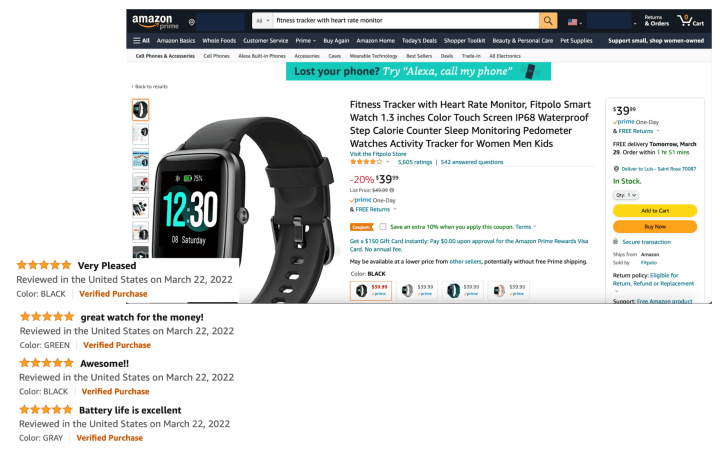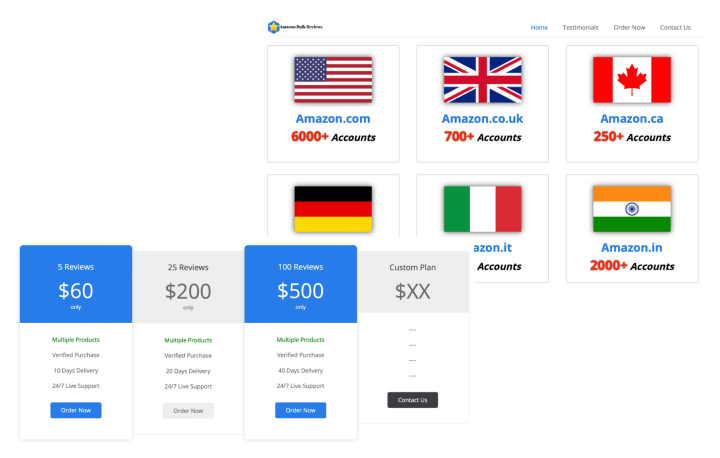4 min read

Last month, Amazon filed lawsuits against two companies that allegedly generated fake reviews on its online marketplace. According to Amazon, the two companies, AppSally and Rebatest, connect third-party sellers with consumers who, in exchange for free products or payments, write positive reviews about the seller’s products, an express violation of Amazon’s “anti-manipulation policy” in its terms of service.
Fake Amazon Reviews
Fake reviews on Amazon have been a problem for several years since the marketplace has grown to include millions of third-party sellers. Amazon has reported that it has taken steps to remove these fake reviews and other fraud, including investing in machine-learning tools and expanding its department of human content moderators. Last year, Amazon even enlisted the help of social media companies to assist them in stopping fake reviews and leading consumers to shady sellers.
Enter Fake Review Checkers
Some consumer protection companies such as Fakespot, ReviewMeta, and the Review Index offer software and mobile applications that help buyers identify fake reviews. While these tools identify certain patterns that are common in fake reviews such as spelling errors, strange capitalizations, and repetitive phrases, their accuracy is not perfect. The human eye is much better at spotting a fake review than a machine.
Can You Trust 'Verified Purchase' Labels?
One aspect Amazon and other marketplaces have instituted is the ‘Verified Purchase’ review. The insinuation is that the product was shipped and delivered to the customer writing the review. But how effective is the “Verified Purchase” review label? These reviews on Amazon have a “Verified Purchase” label next to the reviewer’s name, and many also post pictures of the product after delivery. Consumers love these.
However, IPSecure research finds that even Verified Purchase reviews are suspect. For instance, when large amounts of positive Verified Purchase reviews are posted on the same day, like for this ‘Fitpolo’ fitness tracker;


In addition, after spending about 5 minutes doing some simple google searches, we easily found plenty of websites and apps willing to sell us ‘Verified Purchase’ reviews.
The 'Brushing Scam'
Another key driver in the erosion of trust intended by the Verified Purchase label is the scam known as the ‘Brushing’ scam. In large part, it helps facilitate fake reviews. Brushing occurs when an unsuspecting person receives a product without them actually ordering it, and in, turn, the seller turns them into a verified buyer. They can then post a positive review about their products online, all under your name. By running brushing scams, these companies are also fraudulently increasing their sales numbers.
How to Spot Fake Reviews on Amazon
Generally, consumers are safer buying products with Verified Purchase reviews, but other suspicious indicators are also easily detectable; extremely incorrect grammar, reviews that appear overly positive or negative and reviews that have numerous “five stars” but lack details. Are the reviews even relevant? If the reviews seem to be for an entirely different product than what is listed for sale, manipulation is likely. All are signs the consumer should avoid that product.
Lastly, you could examine the reviewer’s previous reviews. If a reviewer has left a lot of reviews within a short period of time, that reviewer may not be authentic. Finally, look for similarities in reviews. Paid reviews typically have the same tone and content. If you see many reviews that look identical, you likely have found a fake and can report it.
Fake Negative Reviews
Aside from the fraudulent and misleading nature of fake reviews, reviewers can also write fake negative reviews that target legitimate sellers to undermine their credibility and divert buyers to other sellers. Negative reviews are a big problem for sellers because they are very difficult to remove once they have been published.
How to Remove Fake Negative Reviews
To remove fake negative reviews on Amazon, identify them by looking for irrelevant content, suspicious patterns, or reviews that clearly violate Amazon's guidelines. Gather evidence, such as screenshots and detailed notes, to support your case. Then, report the review through Amazon Seller Central “Report Abuse” link or contact Seller Support with a clear explanation of why the review is fake. If necessary, escalate the issue by providing detailed evidence to Amazon’s support team for further investigation.
Final Thoughts
Although fake Amazon reviews, good or bad, do not help buyers or sellers, they are just one item to examine when checking for rogue sellers and counterfeit operations. Other signs include confusing or garbled product descriptions, poor product images, unreasonable shipping expenses or timeframes for product delivery.
In order to truly understand this dark side of product reviews on Amazon, consumers would need to spend significant time investigating each product listing and seller in detail. They don’t do that, and the bad guys take full advantage.
Learn more about how to identify counterfeits or to protect your brand on Amazon.